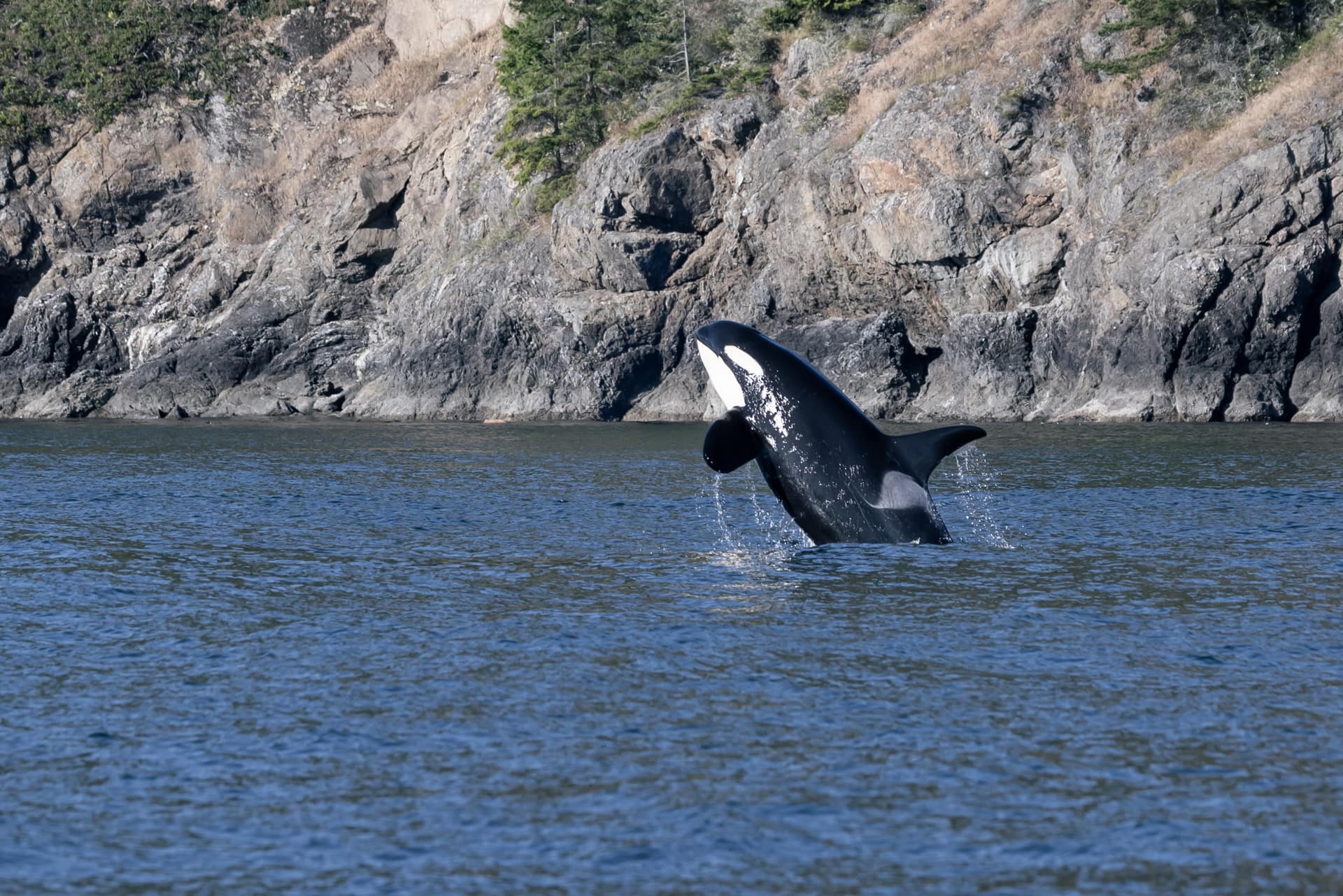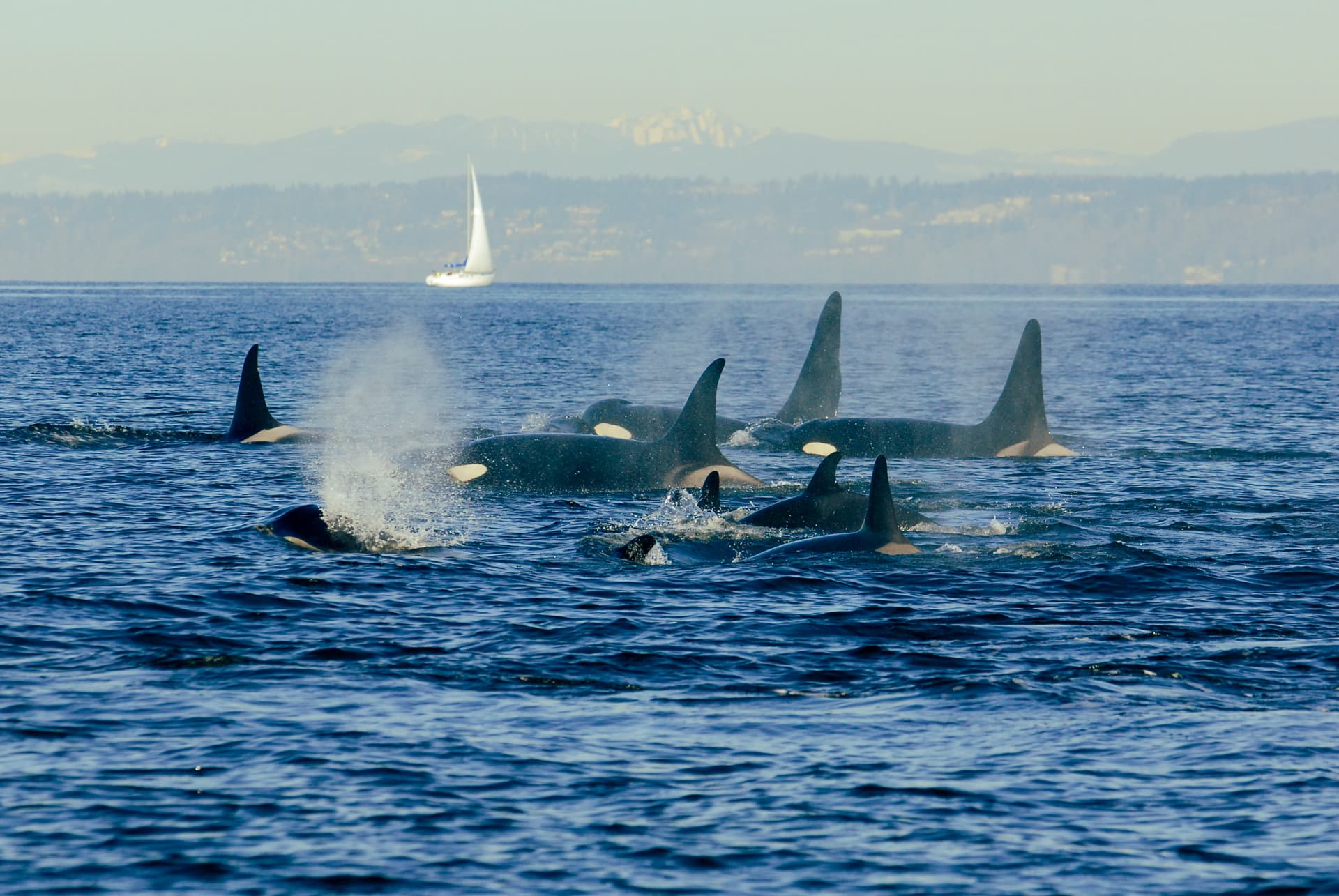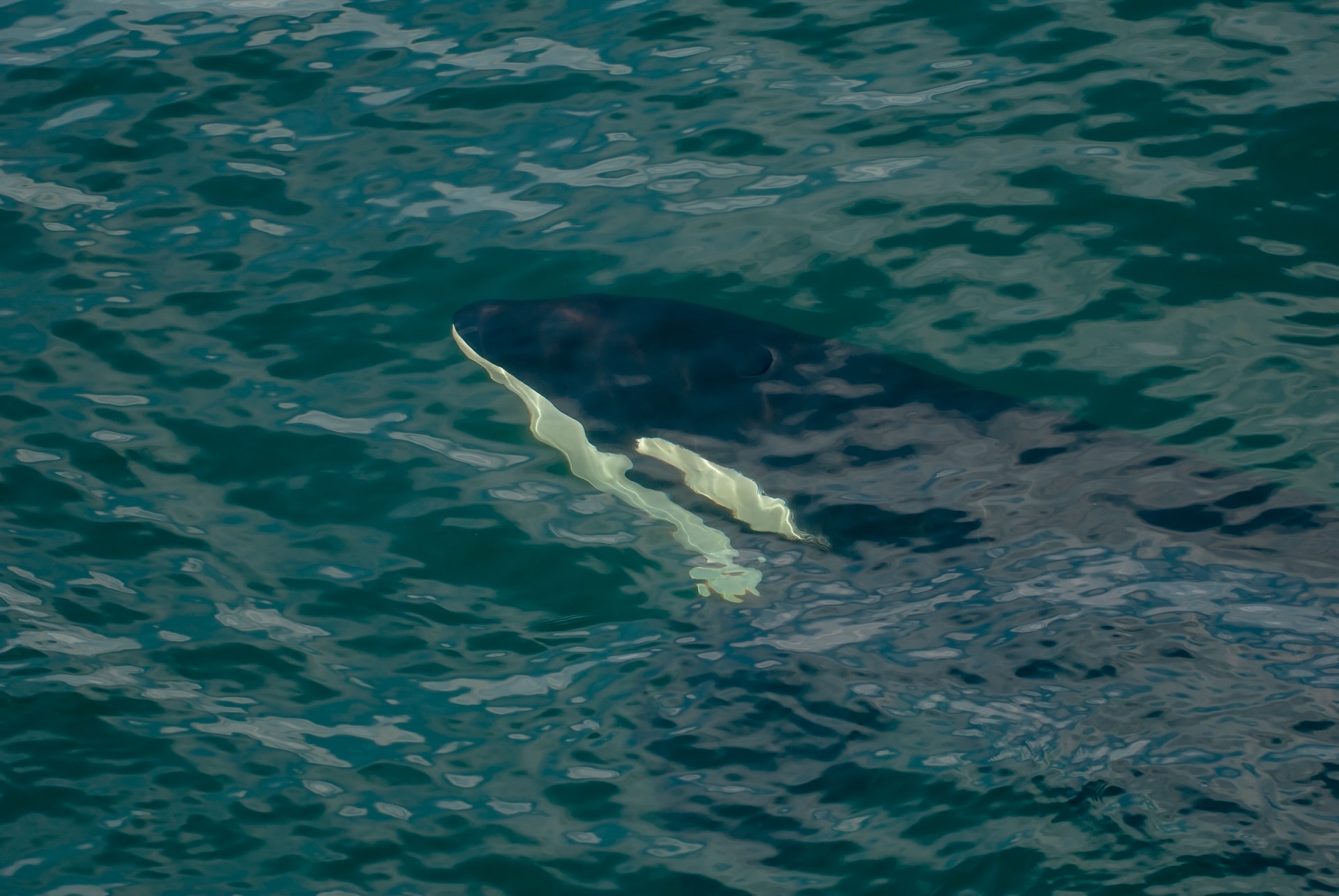
This week, NOAA released a long-awaited study, throwing additional light on the diet of the Southern Resident killer whales, particularly in winter. However, stating that, “Scientists show that endangered whales prey on diverse species throughout the year,” buries the lead, as the most significant finding is that these whales rely on a year-round supply of Chinook salmon, with non-salmon species contributing just a fraction of their needs to raise healthy calves.
Scientists analyzed over 200 samples—collected October through May from 2004 to 2017—from two sources: prey remains (skin, scales) from a freshly-eaten meal (66% of samples), and fecal matter, aka poop, from yesterday’s meal (34%). Although the entire study period was over 2,430 days, only 156 days were spent following various pod members to opportunistically collect samples.

The UW Conservation Canines Orca Scat Project contributed samples to the study.
Previous studies show these whales can eat a variety of species, including outside the salmon family. However, as these scientists admit, they always favor Chinook, “despite that species’ rarity compared to some other salmonids in their range.”
While species such as skates, halibut and lingcod were occasionally found in these new samples, the study reveals just how dependent on Chinook these whales are, inside and outside the Salish Sea. With these new samples—and those collected previously by other researchers—scientists show the reliance of Chinook in their diet is almost 100% in spring, 50% in fall, and 70-80% in mid-winter/early spring.
Here’s another key finding: “[DNA showed] four river systems accounted for over 90% of the [outer coast Chinook] samples, predominantly the Columbia River.” Tragically, dams reduce the potential of this river to a mere fraction of historic levels.
Most outer coast samples were collected off Washington, though the whales’ range extends through Oregon to California, where little sampling occurred. Yet, the scientists noted that the whales are spending more time on the outer coast in recent years than historically. In fact, this pattern’s only increased since this study concluded in 2017, with the number of days in the Salish Sea—by any pod in the community—falling year after year, with Fraser River Chinook less plentiful: thus making Chinook found off the West Coast even more critical to their survival.
NOAA is entrusted with the recovery of this population under the Endangered Species Act yet:
1. This study concluded in 2017, but it’s taken over three years to publish. During which time, the government—under threat of lawsuit—was forced to look again at the impacts of Chinook fisheries on these whales’ survival. Despite the findings of this study, they’ve not made any changes to their management plans.
2. In 2020, the Pacific Fishery Management Council concluded a two-year review, to determine whether their management of outer coast Chinook fisheries was limiting this killer whale population’s recovery. None of these data included in this study were brought forward for consideration—despite NOAA staff being participants in this process—and so only minimal changes were adopted, most too little, too late.
3. 15 years after the Endangered Species listing, Critical habitat along the West Coast is still unprotected by NOAA, despite having these new study findings.
4. For over 20 years, NOAA has concluded that breaching the Snake River dams would be the best way to recover Chinook on the West Coast, yet has taken no action to influence this change, despite collecting these data showing the Columbia River is such a significant resource for these whales.
5. The study notes hatcheries play a significant role in the whales’ diet outside the Salish Sea, due to the number of wild Chinook stocks listed as threatened or endangered. Yet reliance on hatcheries is problematic, even likely playing a role in greater seal/sea lion predation on juvenile salmon. Despite hatcheries producing 50 million Chinook each year, the catch hasn’t increased for commercial fisheries, or whales. Hatcheries can’t continue to be a Band-Aid for a broken ecosystem. Breaching dams and habitat restoration are key to recovering and maintaining genetic diversity of wild salmon.
6. This study continues to demonize seals and sea lions—and even Northern Residents—for eating salmon before they reach the mouths of Southern Residents, when in fact commercial and recreational fisheries—managed by the government—take the lion’s share, with nothing allocated to these endangered whales.
There were 88 whales, when listed as an endangered population in 2005. At that time, numerous studies showed they ranged as far south as California, and primarily ate Chinook. Yet the government insisted on further studies to identify where they go, and what they eat. Today, there are only 75 whales—with three vulnerable calves under 1 year-old. Although NOAA acknowledges the importance of Chinook to these whales, they propose the cause of the unsustainable high pregnancy failure rate (69%) is not due to insufficient Chinook—as other studies suggest—but instead it’s the small population size that makes them vulnerable to extinction. But on whose watch did this population get so small?
This study concludes more monitoring is needed. Wild Orca agrees that collecting evidence is important, but time simply cannot stand still while it happens. Increasing wild Chinook is the key to their survival. If we hope and wait for them to change their diet to other species, from the Chinook they’ve co-evolved with, we will be studying them into extinction. NOAA needs to act now on the best available science, including its own findings that, “Year-round Chinook salmon consumption emphasizes the central importance of this prey species, and suggests that conservation efforts to also increase availability of Chinook in the non-summer may be particularly important to this population’s recovery.”





